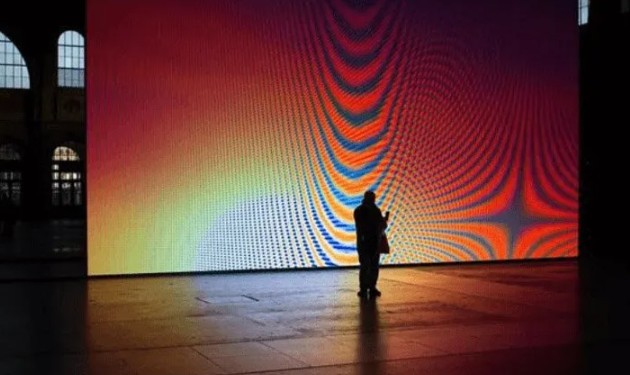In recent years, LED virtual production has rapidly become a game changer in the film, television, and advertising industries. From sci-fi blockbusters to high-end commercials and virtual live events, LED screens are replacing green screens as the go-to solution for immersive and flexible production environments.
One question we often hear from clients and partners in the AV and display industry is:
“Why don’t LED screens flicker on camera?” and
“Why is there no moiré pattern when filming LED walls?”

As professionals in LED display technology, let’s walk through the key technical principles behind these seemingly magical results—using language that’s both accurate and easy to understand.
Traditional LED screens used for advertising or events often have refresh rates of 1920Hz or 3840Hz. While that’s sufficient for the human eye, it’s not enough for modern cinema cameras.
In virtual production, LED walls typically operate at refresh rates of 7680Hz or higher. A high refresh rate ensures the LED pulses (on-off cycles) are happening so fast that the camera’s shutter cannot detect any flickering or scanning artifacts.
Pro Tip: For flicker-free filming, LED walls used in virtual production should support at least 3840Hz, with 7680Hz being ideal.
Even with a high refresh rate, flicker can still occur if the camera and LED screen are not in sync. That’s where Genlock technology comes in.
Genlock (short for “generator locking”) allows the LED controller to sync its output timing with the camera’s frame rate and shutter scan. This ensures that each video frame is displayed exactly in sync with each camera frame, eliminating tearing, ghosting, or flicker.
LED brightness is usually controlled using PWM (Pulse Width Modulation). If the PWM frequency is too low, the flickering becomes visible on camera.
To solve this, LED drivers used in virtual production operate at high-frequency PWM—sometimes tens of kHz. This means the LED is turning on and off so rapidly that even high-speed cameras won’t catch the flicker.
Moiré patterns occur when two fine grids—such as the LED pixel matrix and a camera sensor—interfere with each other, producing visible wavy patterns.
The simplest solution? Use LED screens with ultra-narrow pixel pitch, typically P1.5mm or smaller, with P1.2mm and even P0.9mm being common in high-end setups. With such high pixel density, the LED grid becomes too fine for the camera to resolve any conflicting patterns.
In professional-grade LED walls for film, Black SMD (black surface-mounted LEDs) are often used. These components offer:
By minimizing stray light and reflections, black LEDs help create cleaner camera images and greatly reduce the chances of moiré artifacts.
Even with the right LED hardware, camera settings play a critical role in moiré prevention. Cinematographers typically adjust:
Focal length (shorter is better)
Aperture (narrower apertures help)
Shooting distance (not too close to the LED wall)
These adjustments help defocus the fine LED grid slightly, reducing the chance of moiré appearing on screen.
Here’s a quick summary of the key specs needed for LED displays used in a virtual production environment:
| Feature | Recommended Spec |
| Refresh Rate | ≥ 7680Hz |
| Frame Sync | Genlock-compatible |
| Grayscale Depth | ≥ 16-bit |
| Pixel Pitch | ≤ P1.5mm |
| Adjustable Brightness | 600–1500 nits |
| Color Gamut | ≥ 90% DCI-P3 |
| LED Packaging | Black SMD or COB |
The smooth, artifact-free results you see in LED virtual production don’t happen by accident. It’s the result of meticulously engineered hardware, precise synchronization, and expert camera tuning.
As LED display professionals, understanding these behind-the-scenes details helps us not only serve filmmakers better but also push the boundaries of what’s possible with immersive display technology.
If you’re planning to build an LED setup for virtual production—or just want to dive deeper into Genlock, COB, HDR displays, or narrow-pitch LED—we’d love to connect and provide the best LEDs for your project!